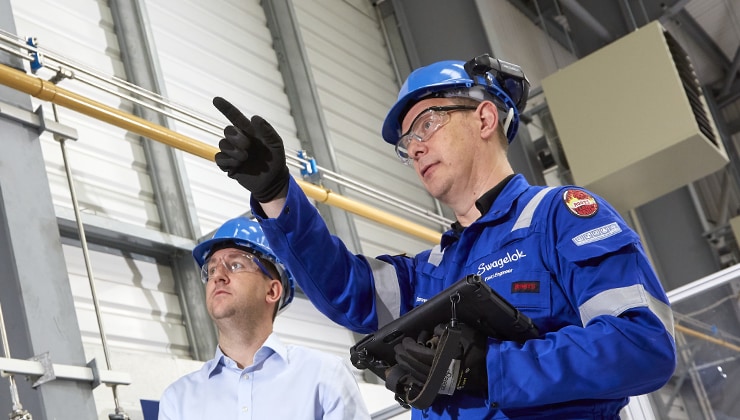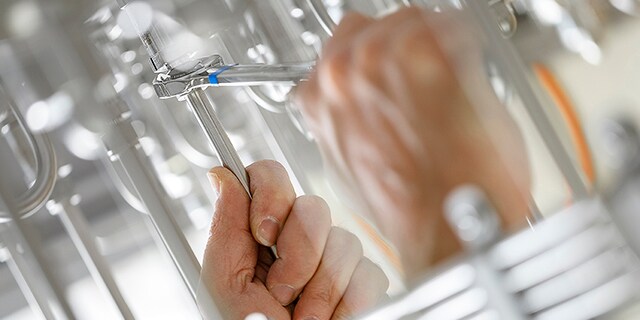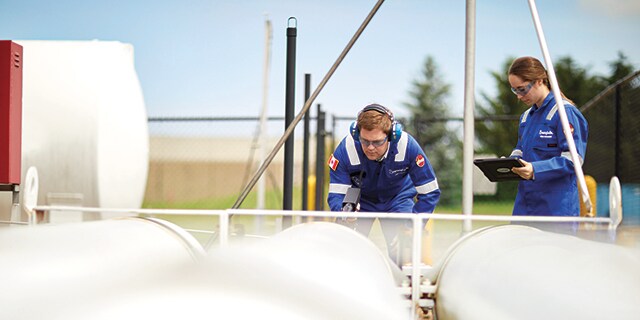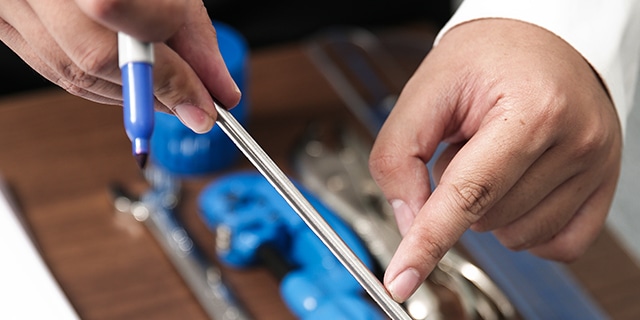: Your Industrial Fluid System Safety Checklist

Your Industrial Fluid System Safety Checklist
Written by Mike Frost, Regional Area Manager, Field Engineering (Asia-Pacific)
Industrial fluid systems are responsible for transporting high-pressure, high-temperature liquids and gases throughout plants in numerous industries. Optimizing the performance of these systems is critical—for both the quality of your end product, and the safety of your plant workers and technicians.
Oil and gas safety, for example—where rigs are often in remote or offshore locations—depends on fluid systems that are operating safely. These systems can be vast and complex, containing a variety of potential risk areas. How to ensure all parts of your system are operating safely and reliably when failure is not an option? Here is a handy checklist containing the most important parts of fluid system safety:
Simplify design wherever possible.
Simpler designs mean fewer opportunities for failure. For example, piping runs that contain numerous direction changes will have several pipe fitting connection points. Utilizing bendable tubing instead can dramatically reduce those connection points—and those additional opportunities for leaks. Fewer individual connection points can also simplify your maintenance and upkeep procedures. Another way to simplify design is trusting a reliable partner with supplying prefabricated system assemblies.
Specify the right componentry.
Selecting ideal components requires a complete understanding of process conditions. For example, if your fluid system generates a static charge, you want to use a hose with a conductive metal core, or a PTFE core with carbon black, to dissipate static rather than discharge it through the hose’s core. This material selection will help prevent future leakage.
Additionally, it is important that fluid system tubing materials be compatible with each other and have the appropriate hardness to stay connected. Metal tubing should be softer than the fitting components, enabling fittings to effectively grip the tube. For example, avoid using brass fittings with stainless steel tubing, as the fitting material is too soft to provide enough hold on the tube. Speaking of component selection …
Avoid component intermix.
Interchanging and intermixing components made by different manufacturers can result in unpredictable performance—including potential leaks and related safety problems. For example, half-inch fittings from different manufacturers may not have the same tolerances. As a result of that incompatibility, there may be an increased potential for poor performance. Obtaining a leak-tight seal that will withstand high pressure, vibration, vacuum, and temperature changes is critical—selecting tubing and fittings from the same reliable manufacturer can help eliminate some of that risk.
Follow the manufacturer's instructions.
Once you have selected components from the same manufacturer, it is important to follow that manufacturer’s instructions for proper assembly and disassembly procedures. This may seem like obvious advice—but even the most experienced technicians should take care to give a close reading to specific direction from the manufacturer. Doing so can help avoid errors including:
- Under-tightening fittings, which creates opportunities for leaks and blowouts.
- Not ensuring tubing rests firmly on the shoulder of the tube fitting body before tightening.
- Failing to properly check tubes for ovality, defects, or scratches that can compromise a seal.
- Failing to check extremes of wall thickness against fitting manufacturers’ suggested limitations.
- Failing to use a proper gap inspection gauge to ensure sufficient fitting pull-up.
Keep operating conditions in mind during design.
Assembly occurs when a fluid system is de-energized—and it can be easy to forget about standard operating conditions like vibration, high pressures, temperatures and other conditions while putting the system together.
Ensure your system has been designed with these factors taken into account. Add proper supports to ensure tubes and fittings will not become fatigued during high-pressure usage. Allow for a proper range of motion for moving components, as motion can strain components and connection points. In instances where significant vibration will occur, consider utilizing a hose instead of tubing—and if doing so, be sure to distribute movement over a sufficient length to prevent any bends that are smaller than the hose’s minimum bend radius.
Label critical components.
Consistent component labeling throughout your fluid system will make it more difficult for technicians to make mistakes. Mount detailed tags on equipment and hoses to indicate what takes place within that system, allowing operators to make appropriate adjustments. You can also color code handles, tubes, and pipes throughout your plant, so workers can immediately identify what types of fluids or gases are flowing through them—reducing room for error.
Check off these boxes, and you will be well on your way to safer industrial fluid system operation. Want to learn more about ways to enhance the safety, efficiency and performance of your fluid system? Learn more about Swagelok Evaluation and Advisory Services today.
Related Articles

Common Causes and Costs of Fluid System Leaks
The smallest leak can present a serious issue when maintaining your plant's safety and profitability. Understand how and why leaks occur, how to locate and test for them, and ultimately how to develop a strategy to address and reduce leaks plant-wide.

Site Supervision Services
Swagelok® onsite services bring our technical expertise, application experience, and industry knowledge to you.

Swagelok Certified Training
Maximize Safety and minimize risks by learning techniques improving your outcomes from Swagelok Certified Expert






